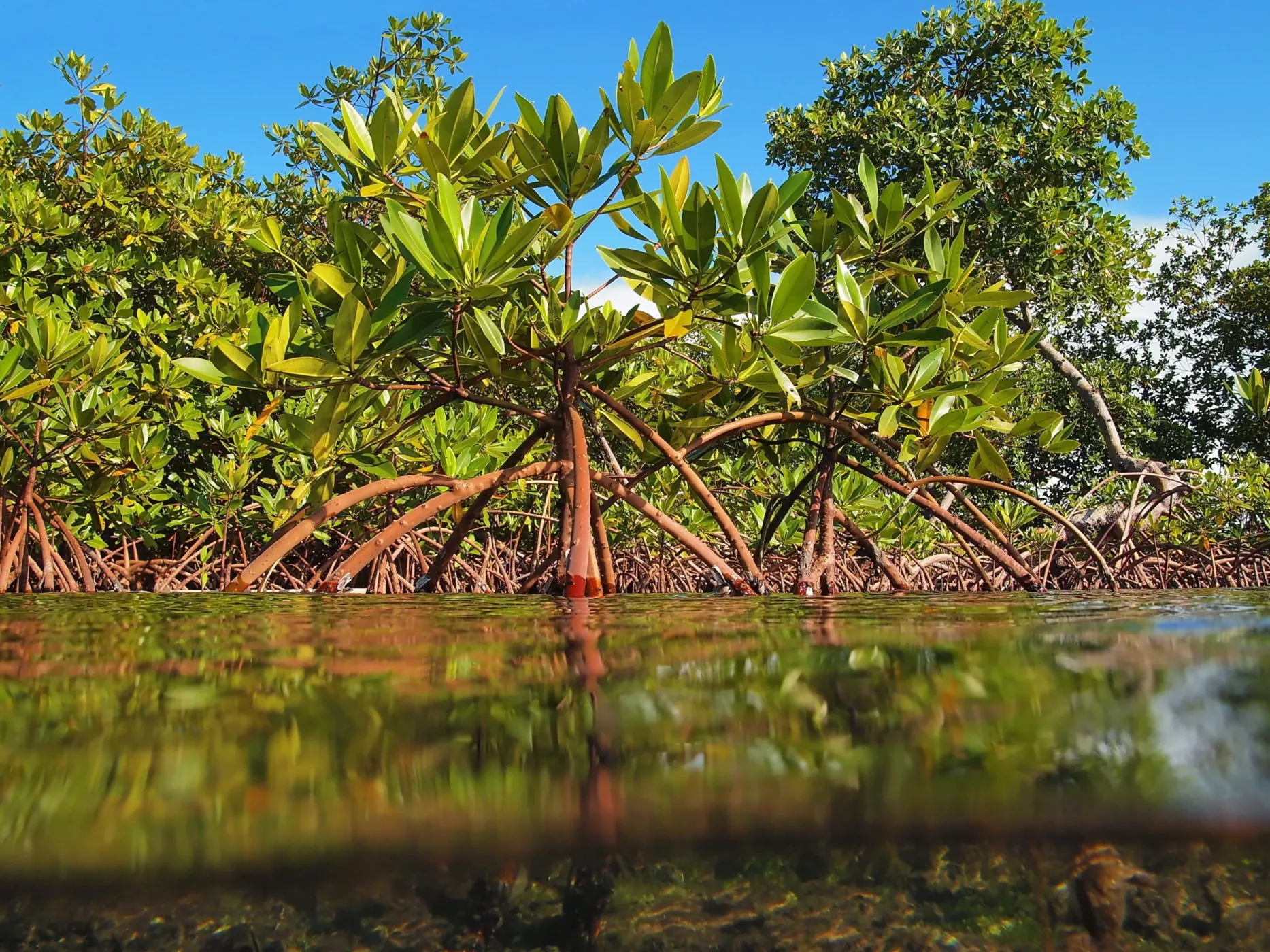Restoring a unique mangrove forest
We are planting 370,000 trees in Mexico in order to restore the mangrove forest. In collaboration with our partner SENDAS and the local population, the project will enable us to bring nature back to life again!

We are planting 370,000 trees in Mexico in order to restore the mangrove forest. In collaboration with our partner SENDAS and the local population, the project will enable us to bring nature back to life again!
trees being planted
hectares of soil
people benefit from the project
planting period
Part of the mangrove forest in Los Tuxtlas was lost in a forest fire, caused by an accident. What remains are pieces of land that are covered only by the rampant growth of invasive plants, which leave hardly any space for the mangroves to regrow spontaneously.
This has an impact on nature as a whole in Los Tuxtlas. The reduction in mangrove forest means a decrease in habitats for (endangered) plants and animals. And furthermore, the fewer mangrove forests, the more vulnerable the region is to the consequences of climate change. This is something the people of Los Tuxtlas are noticing as well. Global warming is raising temperatures and sea levels all over the world, leading to increasingly intense storms and hurricanes.
By planting new mangrove forests, we can turn the tide – both literally and figuratively. New mangrove forests boost the recovery of biodiversity, as well as protecting the region better against intense wind and waves..
Photo 1: The planting location in Los Tuxtlas. Photos 2 and 3: Mangrove forest in Los Tuxtlas that is still intact.
Locals in Los Tuxtlas help with the planting and the digging and management of the water channels.
The first 320,000 trees are now in the ground. And the locals have already dug several new water channels in the area and improved existing channels. The effects are visible already, as the mangrove seeds can spread throughout the area, carried by the water. This stimulates natural regeneration, whereby the seeds grow into new mangrove forests. Are you curious about the other results of this project? We have summarised them in our project update.
To the resultsThe 2023 planting alongside a water channel (left).
We are carrying out this project with our partner SENDAS A.C., a Mexican NGO that has been working on nature conservation in Los Tuxtlas since 1999.
SENDAS has close ties with local organisations and universities, and the inhabitants of Los Tuxtlas. For example, SENDAS works with a ‘brigade’ set up by a local community. The brigade includes local fishermen who have dedicated themselves to restoring the mangroves for years already. Their responsibilities include planting trees, managing the water channels and maintaining the mangrove forests.
A variety of creatures benefit from the mangrove restoration, such as fish, herons, green kingfishers and turtles.
The mangrove forest restoration is taking place in Los Tuxtlas, in the state of Veracruz in the Gulf of Mexico. Los Tuxtlas is known for its gigantic natural diversity, which includes cloud forests, volcanoes, coral reefs, coastal areas and mangrove forests.
Since 2006, Los Tuxtlas has been a designated ‘UNESCO Biosphere Reserve’: a protected natural area where agriculture, livestock farming and fishing are permitted with restrictions. The National Commission of Protected Natural Areas (CONANP) is responsible for managing the biosphere reserve.
As in our other projects, in Mexico, too, we’re taking an integral approach to our work. This means that not only do we plant mangrove trees, but we also look at what else is necessary to restore the landscape. For this reason, we’re also supporting a second project further on in Los Tuxtlas, where we’re helping farmers to use their land sustainably. In addition, we’re planting trees around springs, in order to improve the water balance in the region. By taking an integral approach, we ensure that the various restoration activities reinforce one another.